Natural Homemade Sunblock
NATURAL SUNBLOCK You can make at home!!
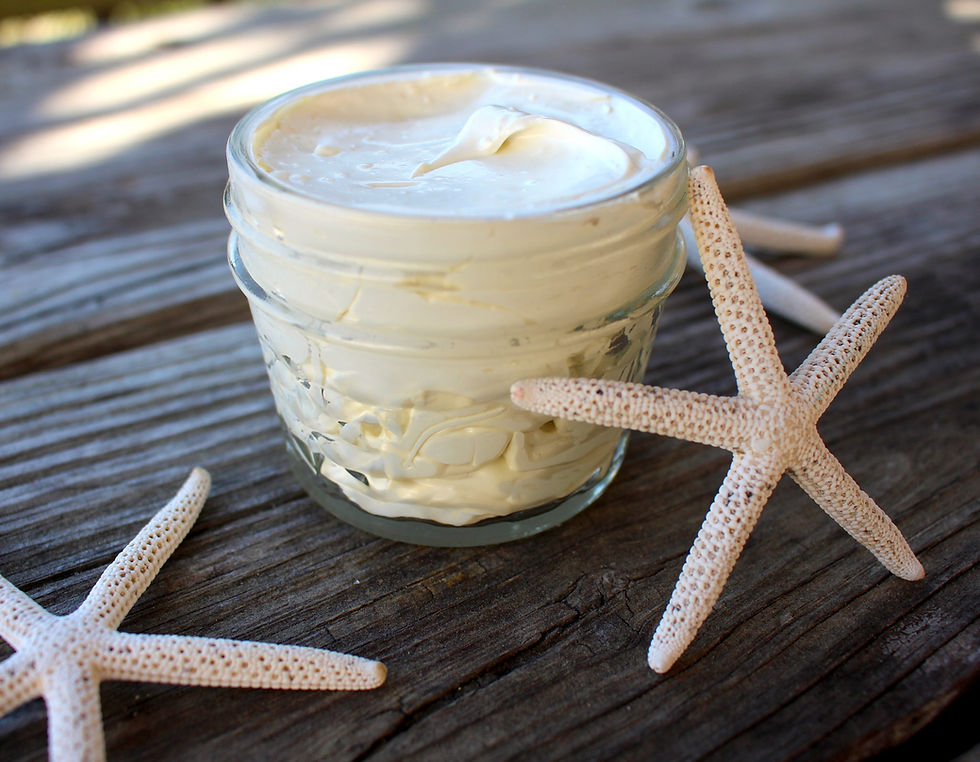
Ahhh, the sun… and all the fun that comes from having warm summer days, but did you know the sun has health benefits as well??
The sun is an excellent source of Vitamin D, and in todays world most people are extremely deficient in this important Vitamin. Mostly because we have indoor jobs, long winters, live in northern climates….

A lack of vitamin D does so many harmful things to us. It crashes our mood, if it gets too low you're body stops functioning normally, our muscles become extremely weak etc. It also includes raising our chances of getting cancer, and lets face it - we don't need any more help in THAT department. We're already high risk if we don't get our symptoms under control. Getting out in the sun is natures natural dose of Vitamin D, and we need it in order to keep healthy. The sun is also essential in helping us keep, rebuild and heal Mitochondria. Mitochondria is the power house of our cells that keep us alive. The sun can help us to heal any damaged mitochondria.
So with all the benefits (and fun to be had) from the sun its no wonder we all want to get out and enjoy it. But what if you’re Allergic to the products used to help protect you from the suns harmful UV rays?

The chemicals found in sunscreens are extremely harmful to the ocean wild life, and definitely the coral reefs. Not to mention the chemicals in them are known to disrupt endocrine, reproductive, thyroid, and in the case of exposure for children – it can permanently alter reproductive development or behavior. Our skin is our biggest organ and it does an EXCELLENT job at absorbing what’s on the surface – giving it direct access right to our blood stream. One research agency found that the chemicals in sunscreen can be found and measured in the bodies blood, breast milk and urine samples. Even the FDA has finally put the sunscreen industry on alert to start making the product safer.
(https://www.ewg.org/sunscreen/report/the-trouble-with-sunscreen-chemicals/)
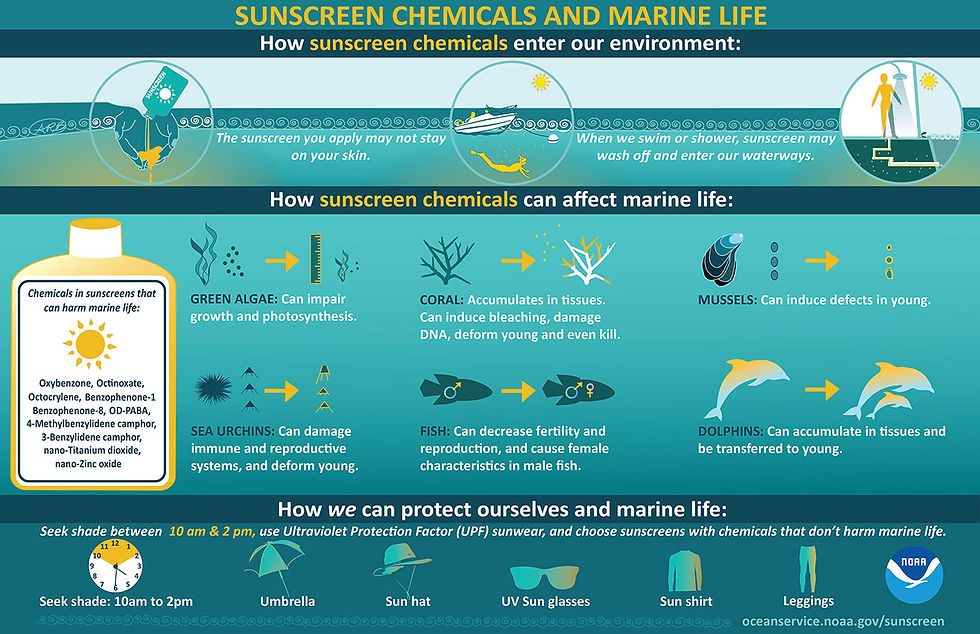
Another study found that something in the ball park of 500 TONS are leached off the skin and into the ocean every year. EEK!! Don't believe me? Ask a diver how harmful the sunblock is - they don't wear it because they can see the physically see the damage it causes if they’re wearing it when they come close or touch coral reef. Now I'm not saying you should head outside in your swimsuits and skip the sunblock. No, you have to use discernment. You need sun to keep you healthy, but burning like a crisp is just as health damaging. Wear sleeves, wide brimmed hat, an umbrella, stay in the shade... or go indoors when it gets too hot, you start to burn, or (more importantly) you start to react.

Some people and doctors say natural sunblock just doesn't work – that its a myth! Its not protecting you from the suns ultra violet rays! Well, that may be true to a point and may not protect from some of the harmful rays, but something is ALWAYS better than nothing. And putting on another store bought sunblock may not be possible for many – so alternative methods are needed.
I looked into some sunblock recipes and came across a few – tried them, but this one ACTUALLY worked!! The cool thing about this recipe is you can use as many or as little ingredients as you want based on your individual needs - its versatile!!
If you can tolerate it, coconut is a natural sunblock all by itself.
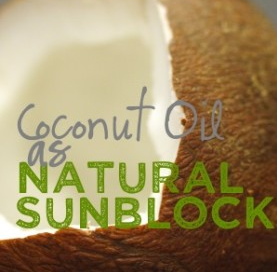
Native islanders have used coconut forever as a suntan lotion, and I have to admit, every time I wore coconut oil, I didn't burn while spending a reasonable amount of time outdoors.
Here are some different oils that have sun blocking capability (not everyone can use coconut, and these oils are not fragrant):
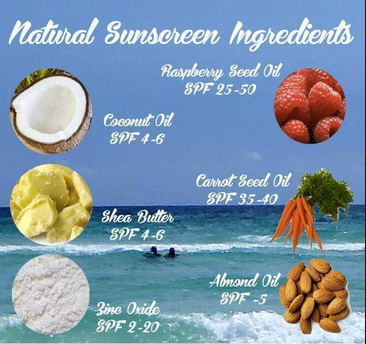
Coconut Oil
Red Raspberry Seed Oil
Carrot Seed Oil
Almond Oil-
Zinc Oxide SPF 2-20 depending on how much is used
Shea Butter
(note, I substituted Olive oil for Almond oil)
Now I won’t dare try to figure out the overall SPF, because its not as simple as just adding them together. There's a whole lot of science that has to go into figuring that out.
The benefits of the Ingredients:

Olive oil has many benefits for your skin. Its an excellent source of antioxidants (oxidation is a process that can produce free radicals which can damage cells and contribute to cancer) and helps prevent premature skin aging. Plus, some research has suggested that putting olive oil on your skin after sun exposure may fight off cancer causing cells. In one study, olive oil was put on the skin of a rat with severe ultraviolet rays (UV) damage, and found that tumor growth was significantly lower than mice that had not been treated with olive oil. Olive oil has vitamins A, D, E, and K. It also has antibacterial effects and is a great moisturizer.
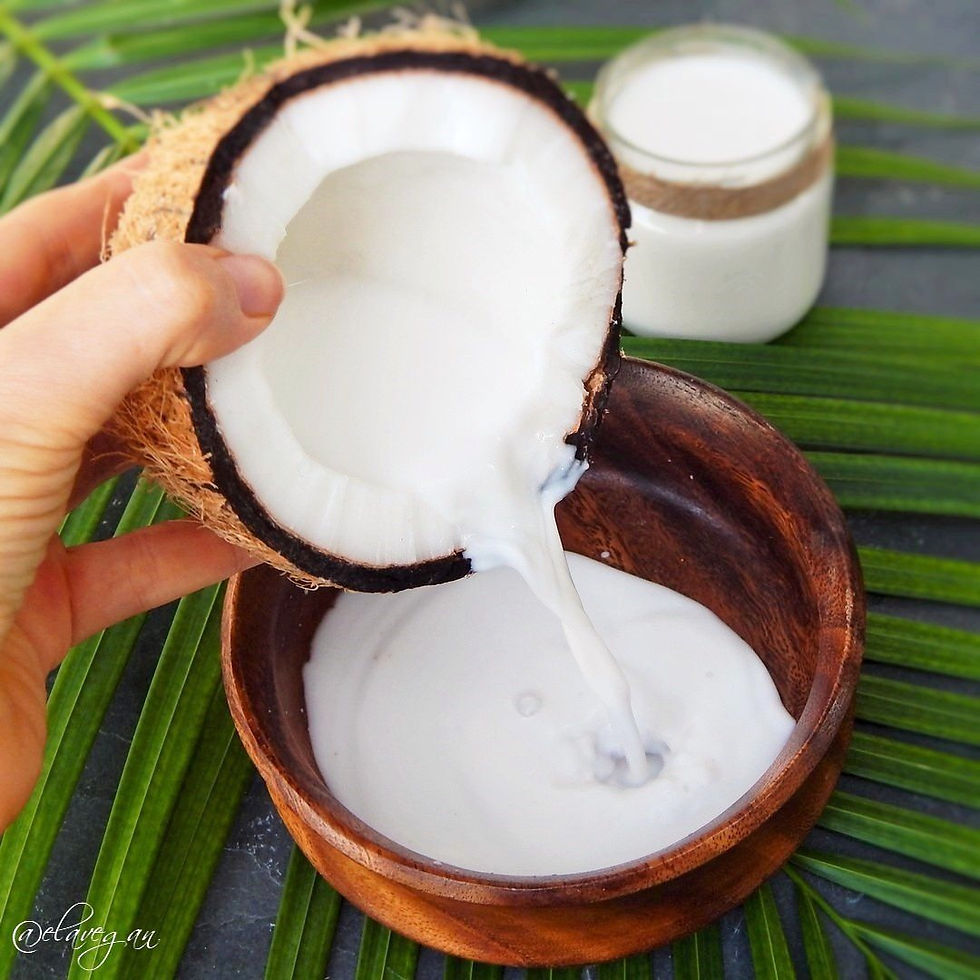
Coconut Oil has many benefits for your skin as well. Its can kill harmful microorganisms (like skin infections, acne, cellulitis, folliculitis, and athletes foot), its antimicrobial, antifungal, reduce inflammation by improving antioxidant status, moisturize dry skin, fight acne, and help in wound healing and increase collagen.
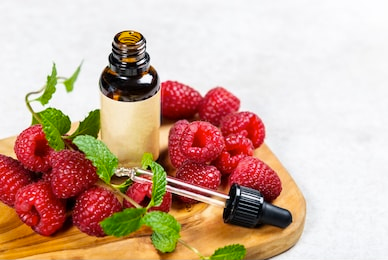
Red Raspberry Seed Oil has a lot of benefits. Its rich in Vitamin A, Topherols, Phytosterols, rich in omega fatty acids (omega 3, 6, 9) and is a natural UV blocker making it perfect for a natural sunblock. Its high in antioxidants, it combats sun damage and photoaging, boosts collagen and elastin for firmer skin, fights acne and helps heal eczema and psoriasis, fights age spots, wrinkles, and premature aging. Red Raspberry Seed oil is especially beneficial to those who are looking for products for anti-aging and for those with sensitive skin. (Its also great for your hair)

Carrot Seed Oil is rich in beta carotene, vitamin A, E, and pro-vitamin A. It helps to heal dry, chapped, cracked skin, balance moisture in the skin, as well as conditions the hair. Used cosmetically, Carrot Seed Oil repairs skin damage, tones muscles and tissue, and tightens skin to prevent it from sagging. By removing bodily toxins, it boosts immunity, reduces muscle and joint inflammation, and addresses fluid retention.
Used medicinally, Carrot Seed Essential Oil lowers blood pressure, facilitates the healing of infected skin and wounds, soothes sore throats and hiccups, and alleviates ailments caused by viruses. Carrot Seed Oil works as a supporting and protective agent that not only enhances skin health but that also repairs damage on skin that has been exposed to pollution and environmental stress, which leads to symptoms of aging. Furthermore, it stimulates the growth of new tissue and new skin, thus promoting a clearer, brighter, evenly toned complexion. By contributing moisture, it relieves skin from irritation associated with ailments such as acne, boils, dermatitis, eczema, psoriasis, and sores, leaving skin looking and feeling smooth, firm, nurtured, revitalized, and generally healthy. Regular use of Carrot Seed Essential Oil on the dry and cracked skin can result in the softening of calluses, the faster healing of scars, the calming of irritation, and the fading of redness and unwanted marks such as age spots. In hair it repairs spit ends, and as a diuretic it increases the bodies ability to expel waste and toxins through urination.

Shea Butter a versatile natural ingredient, its often used in moisturizers, creams, lotions, and other emulsions for the skin and hair. Its an excellent emollient and skin moisturizer.
It also has anti-inflammatory properties and anti-oxidants. It also contains vitamins A and E which help protect your skin from the sun’s harmful UV rays. It improves the skin’s elasticity and makes for a good anti-aging ingredient. They also found Vitamin F (there’s an F?) and it can aid in the treatment of skin conditions like eczema, dermatitis and even slow down premature aging. Its considered a superfood as its rich in unsaturated fats, essential fatty acids like Vitamin E and D, phytosterols, pro-vitamin A, and allantoin. So all in all – it’s a moisturizer, acne fighter, reduces inflammation, anti-aging, relieves itching, restores elasticity of skin, reduces stretch marks, great on razor burn, soothes diaper rashes, and repairs damaged hair…. And so much more.
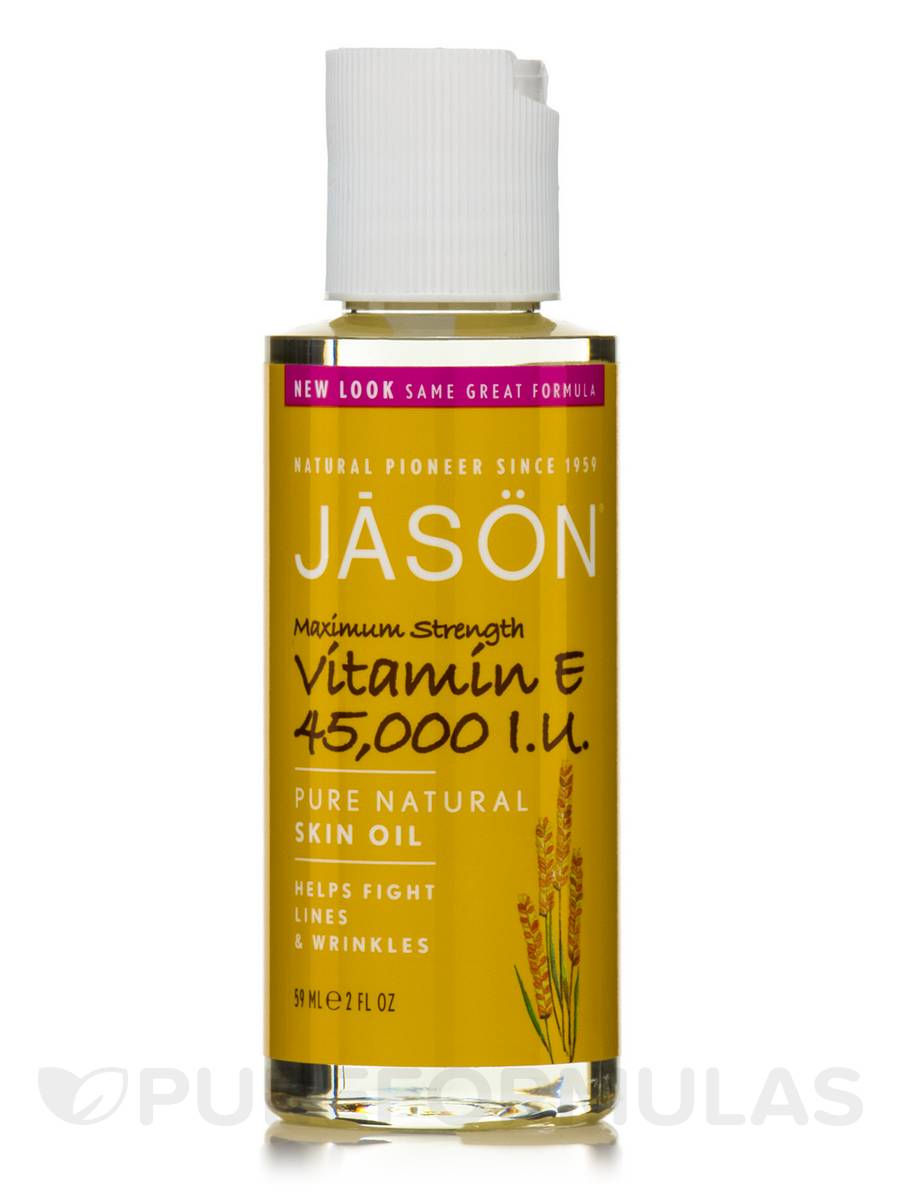
Vitamin E helps for a range of skin disorders. It assists in various kinds of cellular restoration from sun damage to healing support for scars or burns and helps protect it from the sun. Its moisturizing and healing – HOWEVER vitamin E is sometimes not advisable for supersensitive, very oily, or acne prone skin. Although VERY rare it can act as an irritant, cause itching or rash.
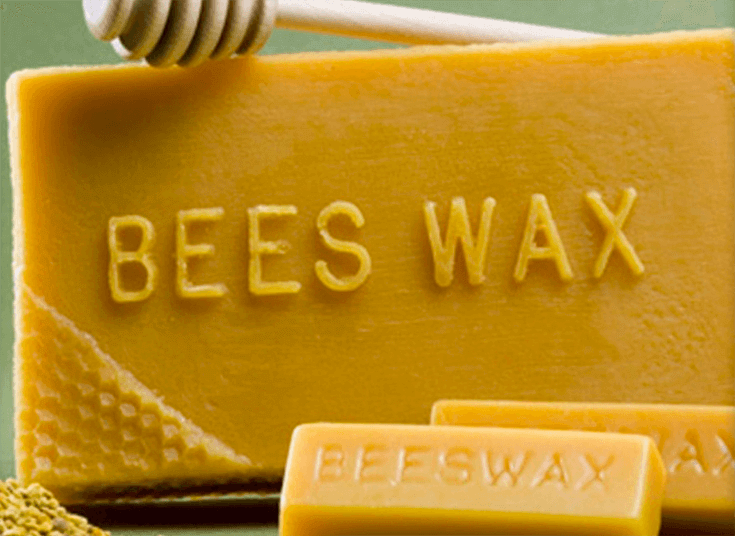
BEESWAX usually a key ingredient in salve making, its used in many skin care products because it offers protection from irritants while still allowing the skin to breathe. Beeswax is also anti-inflammatory, antibacterial, and antiviral. Use caution if you’re significantly allergic to bees. (However, many of us can still tolerate the wax)

You probably don't have a couple of the ingredients in the kitchen, but you can easily find the other ingredients on Amazon. (Be sure you know where the ingredients came from so they’re not irradiated!!) So here is a great recipe that actually has benefits and can feed your skin.
HOME MADE SUNBLOCK RECIPE:
½ cup OLIVE OIL (you can infuse it with herbs first if desired for smell- I picked olive oil because of its natural mast cell stabilizing properties) ¼ cup COCONUT OIL (natural SPF approx 4 - omit if you can't have it) ¼ cup BEESWAX (or emulsifying wax. See note below) 2 Tablespoons ZINC OXIDE (see note below) Up to 1 teaspoon RED RASPBERRY SEED OIL Up to 1 teaspoon CARROT SEED OIL 2 tablespoons SHEA BUTTER 1teaspoon VITAMIN E OIL (heals skin and is a natural preservative)
See directions below, but first some important information before you get started.
Optional: Essential Oils, Vanilla Extract, Eucalyptis (small SPF amount) Lavender (great at soothing and repairing skin), or other natural extracts to suit your preference. Do not use citrus essential oils as they increase sun sensitivity!!
OIL Substitutes:
Jojoba, sunflower seed oil. They all are easily absorbed into the skin. Many sites list sesame seed oil as also a good absorbing oil, however many of us can be allergic to it. Sunflower seed oil can be an inflammatory when consumed - so use caution as your skin will absorb it into the blood stream. I stick to olive oil because of the mast cell properties and the coconut.

ZINC OXIDE This is a non-nano version that won’t be absorbed into the skin. Be careful not to inhale the powder. You want between150NM to 350NM. The closer to 350 the better. Important: Nano or micronized zinc oxide has been treated to reduce the size of its particles, creating an ultrafine powder.
When added to sunscreens it does not leave a white film on the skin, thus making it a popular choice in many commercial sunscreens. The problem with this is that the particles are so small they can enter the body through the skin, causing potential health problems. Be sure to purchase a non nano zinc oxide that has particle sizes as large as possible. (Anything with a particle size smaller than 100nm is considered a nano particle – the zinc oxide we found is 330nm.) For SPF 2-5: Use 5% zinc oxide For SPF 6-11: Use 10% zinc oxide For SPF 12-19: Use 15% zinc oxide For SPF >20: Use 20% zinc oxide BEESWAX Substitute: Non GMO emulsifying wax pastilles; as some of us who allergic to bees can be allergic to honey or beeswax.
DIRECTIONS:
Add your oils; coconut oil, olive oil, shea butter, Vitamin E oil, Carrot seed oil, Red raspberry seed oil, and jojoba/sesame/sunflower oil to a makeshift double boiler. (To make your own double boiler, place a Pyrex measuring cup or mason jar containing ingredients inside a small pot filled with a few inches of water). Heat gently until shea butter is just melted and occasionally stir the oils. Remove from double boiler and allow to cool a little. Put on a mask that covers your nose and mouth (to avoid breathing in the fine particles of zinc oxide powder), and measure out your zinc oxide. Add zinc oxide, and optional essential oils to the other ingredients. Stir well to combine. Store in a dark jar in the refrigerator or at room temperature.
Note: You can use Carrot seed oil and/or Red Raspberry Seed oil - or omit them if you don't want that much protection.
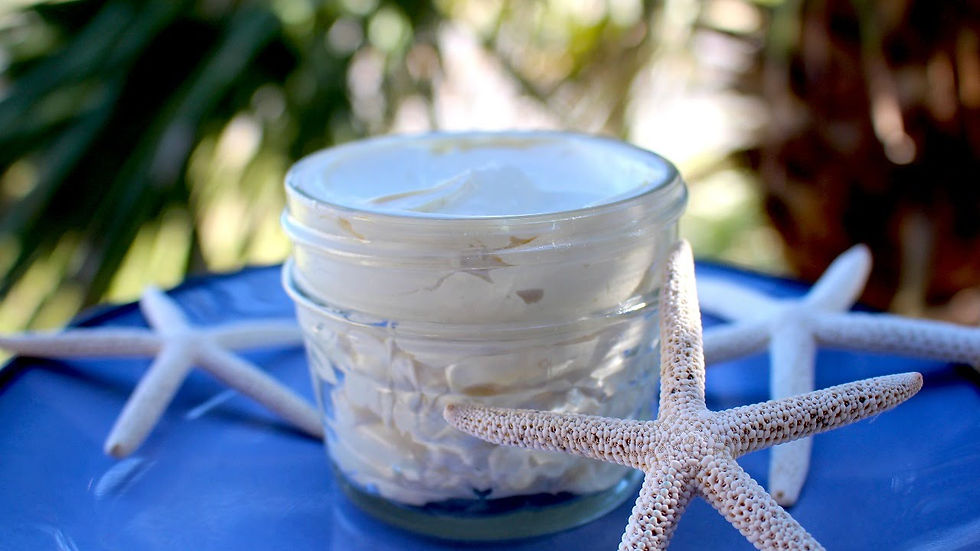
Don't put it in a pump, it wont work - its too thick. I use small mason jars. If you just want a great lotion, omit the zinc oxide!! This recipe is pretty versatile - you can also add aloe vera gel.. and any other oil you prefer. Just customize it to you're liking! If you want you can whip it with you're hand mixer for a super light creamy feel.
Love and Light,
Happy Healing!!
Happy Solstice Day Everyone!! Enjoy some carefree fun in the sun!! In Alaska, its the day the sun doesn't set!
.jpg)


